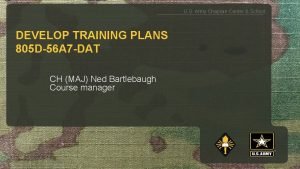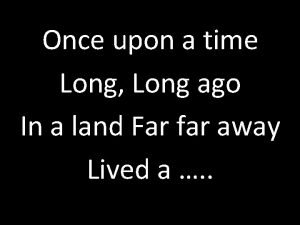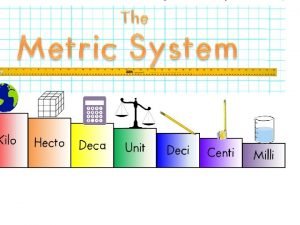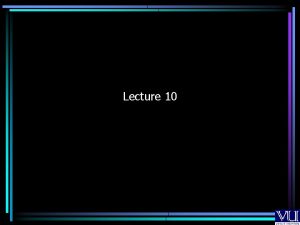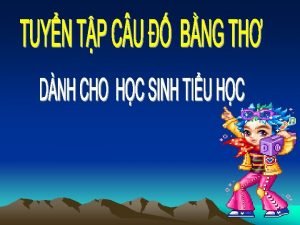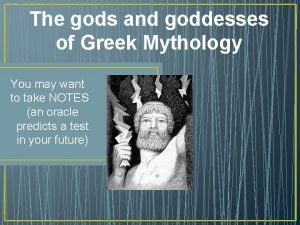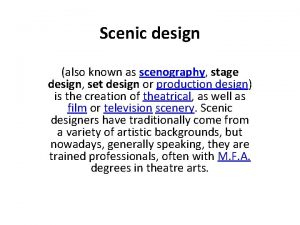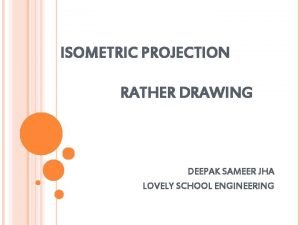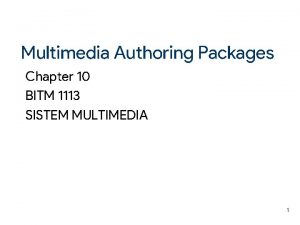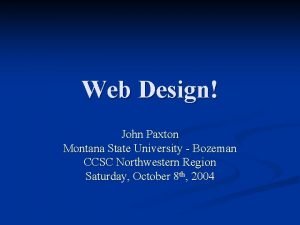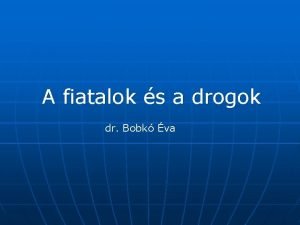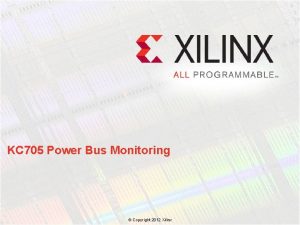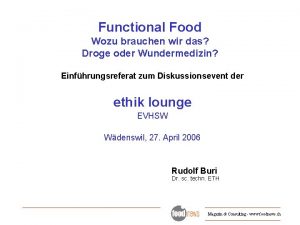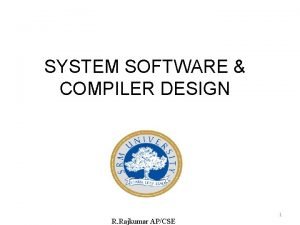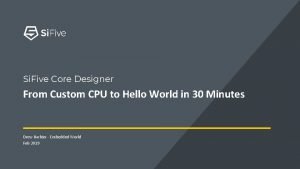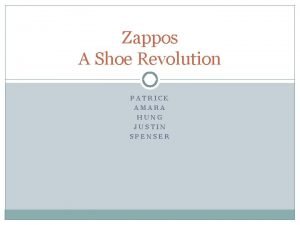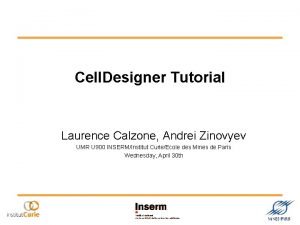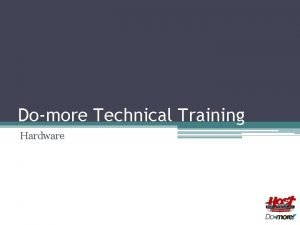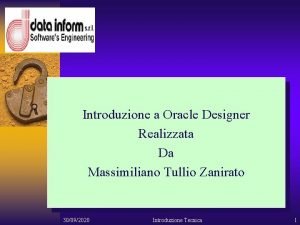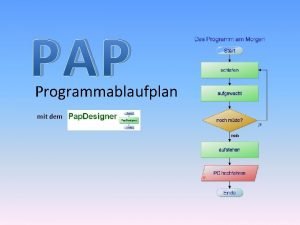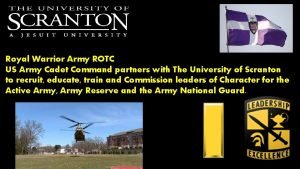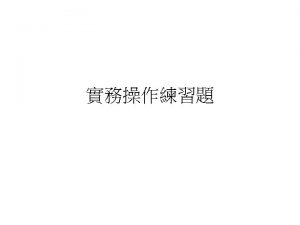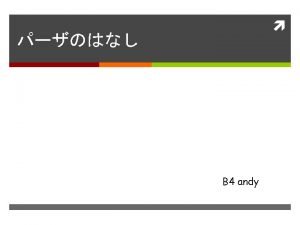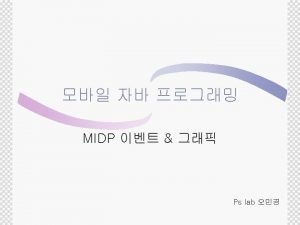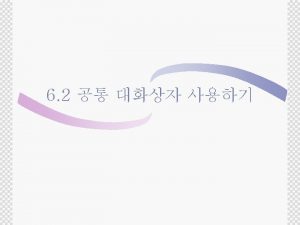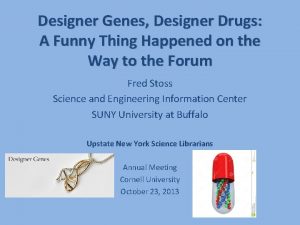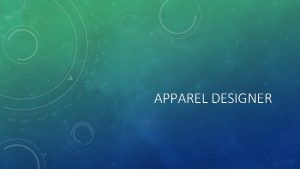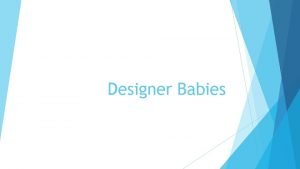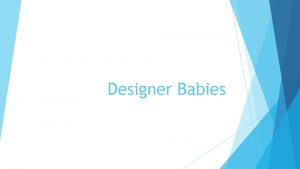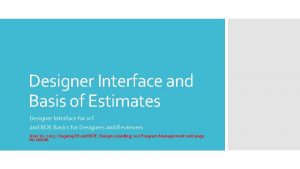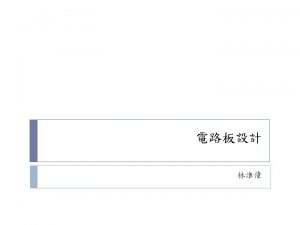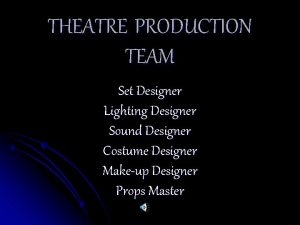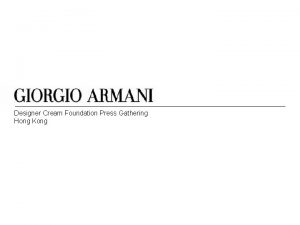Ken Long Asst ProfessorCurriculum Designer US Army Command































- Slides: 31

Ken Long Asst Professor/Curriculum Designer US Army Command & General Staff College Department of Logistics & Resource Operations ATZL-SWR, Rm 2156 100 Stimson Ave, L&C Bldg Ft Leavenworth, KS 66027 (W) 913. 684. 2925 long-kenneth@conus. army. mil longke@yahoo. com kansasreflections. wordpress. com

Voice?

What happens when you encourage Voice?

Transformation

• • • 1 st, 2 d, 3 d person Action Research Curriculum redesign (10%) & a book Program feedback strategies Infrastructure & policy Social media outreach Networked partnerships around the world Independent studies x 3 Featured in Congressional testimony 3 “small world” management games for learning, interest at Joint Staff level • Business x 5, a book, and much more • Much better soccer coach

Constructs & theories Questions • Sense-making • Reflective Practitioners • Bounded rationality • Complex Adaptive Systems • Culture • Connectionism (Ed theory) • Lifelong learning • Open systems learning • Martial theory • PAR methodology • “Chaoplexic” • What is it? • Can you give it? • Do you listen? Speak? • Truth to power • Responsibility • Topics • So what? • Results? Voice Warrior Dharma Professional learning Domains • school • classroom • peers • Self • organizations • Family • “Use it or lose it” Org Transformation Net centric education Professional growth Action Research • 1 st, 2 d, 3 d person • 4 ways of knowing • Transformation • Quality • Values • Synergy • Documentation • Infrastructure • Consequences

Stakeholder map Internal • Curriculum Developers • Lesson Authors • F 100 Block Author • Faculty Unlikely Suspects • Other CGSC departments • Other service schools • Army War college • Academia Client • Department Director • Deputy Desired Future • Current students • External faculty 5 Departments • Tactics • Strategy • History • Leadership • Sustainment Instructor Skills • Expert • Journeyman • Novice Decision makers • Dean • Department Director External • Academic Dean • Deputy Commandant • Field Army • Graduates • Army Force Mgt School • Dept of Army staff • Congress Topics • Operational concept • Requirements • Capabilities • Resourcing • Modernization • Acquisition • Documentation • Readiness • Seminar

Research question: What are the effects of increasing “Voice” on our educational programs? Method: mixed methods (Qual + quant) PAR to guide inquiry & scope, and to incorporate Voices Narrative Inquiry for analysis and sense making Produce a rich description of our experience (sanitized as needed) Describe results in 1 st , 2 d, 3 d person AR Describe results in the “ 4 ways of knowing” Military Practice OE • Uncertainty • Culture • Influence • Information Military Education Curriculum • F 100 • Force generation • Faculty Development • Mentoring • Independent studies Feedback • Quant (surveys) • Qualitative (narrative & synthesis) • Senior leader “framing” narratives AR outcomes/results • 1 st person: my teaching practice • 2 d person: partnership results • 3 d person: group results Adaptive curriculum Practice PAR Theory PAR PAR Narrative Inquiry • Data become stories • Analyzing stories for data Cycles of Participatory Action Research Concept of “Voice” • Feedback • Dialogue • Strategic communication • Blogs, wiki’s • Curriculum adaptation Army change management & Force Generation • Archival feedback • Ongoing design & “Voice” • Interviews and narratives Theories that inform • Connectivism • Bounded rationality • Complexity & Chaos • Military theory • Design • Human Concept • CCJO • Force Gen • Transformation • Leader development • Culture • Sense-making • PAR • Narrative inquiry AR: 4 ways of knowing • Experiential • Presentational • Propositional • Practical Committee • PAR textbook author (Ed D, Ireland) • Handbook of AR author Ph. D, USC) • Career AF Officer DM @ CTU • Quant Ph. D (Benedictine)


Army change management Issues? • Standardization? • Initiative? • Uncertainty? • Experiential learning? • Adaptation? • Training vs education? Campuses • Primary • Satellite • Reserves Charter • Integration • History • Leadership • Strategy • Tactics • Logistics Informs Army Force Mgt School Technicians • Formal education • For and by technicians • “How the Army Runs” (1000 pages) • A formal system specification Congress • Funding • “Educate for stewardship” Command & General Staff College Educating leaders for uncertainty Creates Prepares Instructors • Technicians (few) • Logisticians • General practitioners Students System Education? • As designed? • As operating? • As evolving? • As it could be? • As it should be? • Audience? Deploys The Operational Army in the world A complex adaptive system The Pentagon • The Generating Force • How the Army really runs • Regulations & Adaptations • Processes, Products, Players Systems Life Cycle • Operating Concept • Requirements • Capabilities • Resourcing • Modernization • Acquisition • Contracting • Documentation • Readiness • Fielding

http: //kansasreflections. wordpress. com/youtube-video-links/ Offer your research to the world

5 Questions for you • • • The best part? The least useful? Best resource or takeaway? Biggest unanswered question? Biggest surprise?

Force Generation in the Curriculum Accepting risk (Knowledge level) Mission Analysis RFF Strat JFCOM Global Force Mgt System Phases: I, III, IV, V, VI Service Resourcing Concept of Mnvr Opnl Strat Trans TPFDD Sources • G 3 • G 4 • G 8 • AMC • ACSIM • JFCOM • FORSCOM • NORTHCOM • CALL • Faculty • Students Reset JRSOI: 30 Bdes ARFORGEN Concept of Spt Log prep of theater Tac Gen Force support to theater ARFORGEN Enablers: • Guest speaker program • Student text: for stable info • Wiki: for dynamic info • Blog: for inter-classroom discussion Core curriculum in support: • DJIIMO: capabilities, joint force, planning • CTAC: capabilities, planning • DMH: perspectives on armies in transformation • DCL: cognitive & leadership skills for transformation • DLRO: F 100, esp F 105, F 107 Campaign Plan (Employ) Phases: I, III, Train Redeploy IV, V, VI Deploy Employ CTAC DMH DJIIMO DCL Force Generation Trans Chair DLRO Students ? Reset

Force Generation Knowledge Model Proponent: DLRO Officers with questions (-) Army Proponents Faculty & Editorial board answers questions publish Survey & questions maintain Survey & advice Student Text Wiki stable information Annual update dynamic information Blackboard Reachback issued become Use & contribute supports Core AOWC AAPs All MAJs MF&E MAJs Electives Officers with advice (+)

Past Present Future Paradise lost False Boun dary o f the p ossib le f ary o d Boun Space of all possible pasts sible s o p the True Futures possible from this moment Path chosen: Basis of qualitative judgment Shapes our norms, shaped by cognitive bias Becomes the dominant narrative, our “Truth” ssibl Boun dary e po of th Where we are What we know False beliefs e Boun dary False of th e po ssibl e P e r f o r m a n c e S a t i s f a c t i o n

Army Senior Leaders Personal Formative Events Doctrine Army Leadership model Qualitative Leadership Judgment Various units Students The School • Doctrine • Best practice • Gatekeeper • Moderating effect Faculty Time & experience Students Faculty Senior leaders Future needs?

Culture • leadership • faculty • students Voice Predicts successful Transformation? officer student officer world school world No voice Judgment Doctrine Experience Norms What we teach What students want Satisfaction Grades What we teach Success Satisfaction Assessment Good Bad Missing

Student mindmap Across the full spectrum of conflict Stable Peace Unstable Peace Insurgency General War Across the full spectrum of support Deploy $ S O T ! Employ ? Sustain Redeploy Refit

CGSS Organization Deputy Commandant Dean of Academics Operations Satellite Campuses Command & General Staff School Ft. Belvoir, VA Ft. Lee, VA Ft. Gordon, GA Department of Logistics and Resource Operations (DLRO) Curriculum Operations United States Student Division (USSD) International Military Student Division (IMSD) Department of Military History (DMH) Department of Command & Leadership (DCL) Center for Army Tactics (CTAC) Department of Joint and Multinational Operations (DJMO) Director, Distance Education (DDE) 19

DLRO Organization COL Di. Marco Director Mr. Jackson Program Manager/ Deputy Director Operations Officer Editor Secretary Team A 25 instructors Team B 25 instructors Satellite Campus (4) Development and Assessment Mr. Long Curriculum Development Five Teaching Team Leaders 20

Curriculum development system • Which feedback loop is most important? • Is the system under control? • Are we designing curriculum or making sausage? GO level feedback CGSC Faculty PIC/CDR process + Curriculum CASCOM? students Field Requirements + Students? Students Time & budget process disconnected from field? Units? Measure delivery?

Assessment: It’s not just Grades anymore Time Resources Instructor baseline TLOs ELOs Standards Field requirements Officer performance Levels of learning Standards Student outcomes FDP Instructor OBJ Near Lesson Plans OBJ Far LD Student baseline Instruction Instructor performance LD Student performance Assessment


F 100 Linkage & DLRO instruction Foundations Strategic Env Joint Servic e JIIM cap Doctrine Functions Planning C 504 Fuel, distribution mgt, UJTL threads C 600 Sustainment C 506 Mvt & Mvr C 210 Army Strat Log C 202/4 NSS/NDS/NMS Do. D Strat F 101 Guidance C 161 A C 304 C 414 Army Op. Log Tac Log F 105 Documentation L 106 Organizational Stress Capabilities L 103 F 103 Lead Orgs in Change Resourcing C 203 F 104 Do. D Orgs Modernization C 412 Full spec OPs General support H 101 H 201 Contracting F 102 Civ/Mil Relations C 121 C 122 C 131 F 107 Readiness F 106 L 111 Influencing Organizations Thru Vision L 107 C 308 Leading Ethical Orgs Interagency C 310 C 309 OPLaw Multinational F 108 FM Seminar L 105 Developing Ethical Orgs = strong linkage

ARMY ORGANIZATIONAL LIFE CYCLE MODEL Develop a capable combat force within constrained resources. Release / remove people & equipment from military control; dispose of facilities or real property. Increase force capabilities; bring people &/or equipment to a more advanced state. FORCE MANAGEMENT ACQUISITION SEPARATION DEVELOPMENT TITLE 10 USC SUSTAINMENT COMMAND, MANAGEMENT LEADERSHIP and ARTICULATION Provide for people, organizations, & equipment by furnishing means or funds. Obtain people, equipment, money, & facilities. TRAINING Impart & instill that discipline, instruction, drill, & practice designed to create military efficiency or proficiency. DISTRIBUTION DEPLOYMENT Project a combat force rapidly to any place in the world to satisfy a national requirement. RESOURCES: People, Things, Time, Money, Information & Technology Allot people &/or equipment to claimant Organizations according to priorities.

The Process and Lesson Sequence Prioritize & Request Resources Provide Vision Design Organizations (O&O plans) Develop Organizational Models Document Organizational Authorizations TOEs MTOEs Identify Capabilities (DOTMLPF) Get & Distribute People COMBAT READY UNITS Distribute Material Acquisition/Management Make Stuff Cbtant Cdrs

Backup

Hours available: 16 What do we teach? To what level? At what cost? Measured by?

Army Capabilities-Based Assessment (CBA) STRATEGIC INPUTS NSS, NMS, QDR, GDF, Army Vision, etc A N A L Y T I C A L C O N S I D E R A T I O N S Army Roles & Missions: Strategic Operational Tactical Capstone Concept Joint Operational Environment Analysis Future world conditions (threat) over next 2 decades The Army in Joint Operations Operating Concepts Functional Area Analysis (FAA) • Strategy to concept to mission to task (AUTL / UJTL) analysis: What we do to accomplish missions • Operational Maneuver • Tactical Maneuver • • Considers threats and emerging technologies Functional Concepts • IDs the tasks (capabilities) Command See Move Strike Protect Sustain strategic guidance (tasks, conditions, and standards) • Refines concepts and force design parameters required to fulfill the Army’s responsibilities as defined by Analytical Underpinning s: Oper. Lessons, Experiences, Studies Assess Threats Doctrine Organization Solution(s) Recommendation Training Leadership & Education Technological Forecasts Enduring Fundamentals, Assumptions Ao. A: Analysis of Alternatives AUTL: Army Universal Task List CDD: Capability Development Document CPD: Capability Production Document FCS: Future Combat System ICD: Initial Capabilities Document UJTL: Universal Joint Task List SRM: Sustainment, Restoration, and Modernization Personnel Functional Needs Analysis (FNA) • Determines required tasks vs. current and projected capabilities • ID opportunities for technology breakthroughs • Utilizes all available analytical resources • Prepares time-based common list of required capabilities (needs) prioritized by performance assessment of current capability Functional Solution Analysis (FSA) • Develops relevant set of potential solutions for the needs identified in the FNA • Serves as first looks at DOTLMPF solutions to solve mission and system deficiencies, then new material • IDs, integrates, and prioritizes potential solutions / mixes of solutions and constrains by cost, risk, timeframe, and interoperability factors Doctrine Program Directive Unit Reference Sheets (URS) Table of Organization & Equipment (TOE) Individual Training Plan (ITP) Course Administrative Data (CAD) Program of Instruction (POI) Combined Arms Training Strategy (CATS) Leader Development Action Plan (LDAP) Soldier Development Memorandum Facilities MILCON Memorandum (new construction) SRM Funding Request (modify existing) Materiel System Modification System Upgrade (CDD / CPD Modification) New System Start (ICD, Ao. A, CDD, CPD) 29

We need vision, a blueprint, and feedback Recommendations: • Vision describes the endstate • Blueprint guides the work in progress and establishes the checkpoints • Feedback tells us if we are delivering to our supported units/students as they APPLY our curriculum in the field Web based Painless Significant The FIELD Last year’s students

Voice: • Opportunities for inquiry • Input is solicited and considered • Academic freedom • No retribution • Choices in lessons • Choices in methods • Choices in grading • Adapting to individual needs • Responsiveness by faculty • Adaptability of college • Timeliness • Formal and informal channels • Access to leaders Satisfaction with CGSC education Environmental conditions Workload Grade equity Policy Faculty Individual circumstances Nature of classes in 3 different courses Core course Faculty Advanced Operations Course Advanced Applications Program Faculty Individual circumstances Time
 Short short short long long long short short short
Short short short long long long short short short Once upon a time there lived a little country girl
Once upon a time there lived a little country girl Us army chaplain center and school
Us army chaplain center and school Once upon a time and long ago
Once upon a time and long ago Once upon a time a long long time ago begins the story
Once upon a time a long long time ago begins the story Not so long ago, people
Not so long ago, people Long long int c
Long long int c Mình tròn thân trắng dáng hình thon thon
Mình tròn thân trắng dáng hình thon thon Once upon a time there was a king short story
Once upon a time there was a king short story Greek
Greek Poem about tinikling
Poem about tinikling Mình tròn thân trắng dáng hình thon thon
Mình tròn thân trắng dáng hình thon thon Scenic design meaning
Scenic design meaning Isometric view means
Isometric view means Released now multimedia authoring system
Released now multimedia authoring system Bozeman web design
Bozeman web design Bobk
Bobk Designer shoe collection
Designer shoe collection Altium designer 2013
Altium designer 2013 Fusion digital power designer
Fusion digital power designer Designer food definition
Designer food definition The designer expresses the ideas in terms related to the
The designer expresses the ideas in terms related to the Sifive core designer
Sifive core designer Humber bridge designer
Humber bridge designer Webench power designer download
Webench power designer download Patrick amara
Patrick amara Celldesigner tutorial
Celldesigner tutorial Designer
Designer Do more designer
Do more designer Sally reardon
Sally reardon Oracle designer
Oracle designer Pap din 66001
Pap din 66001


